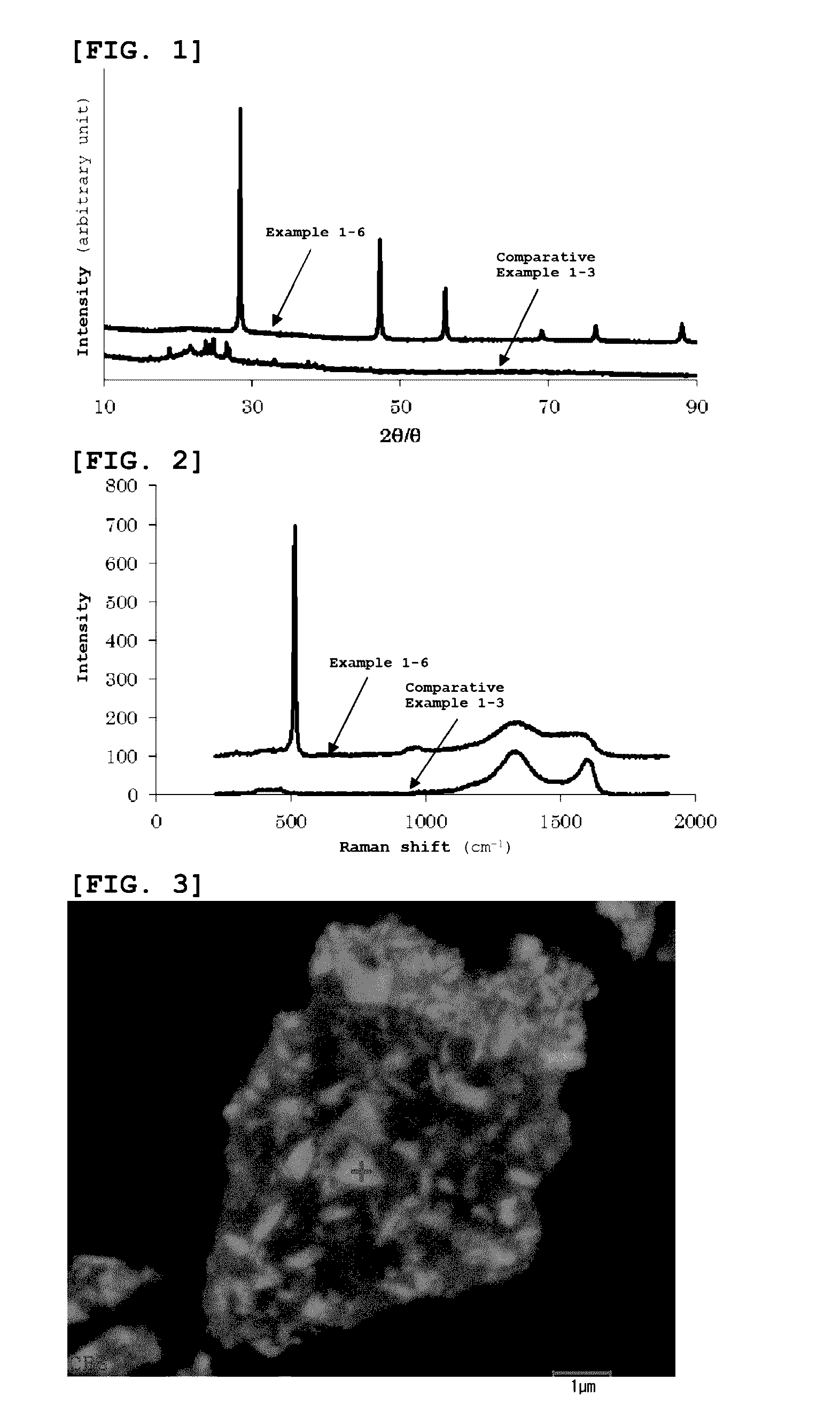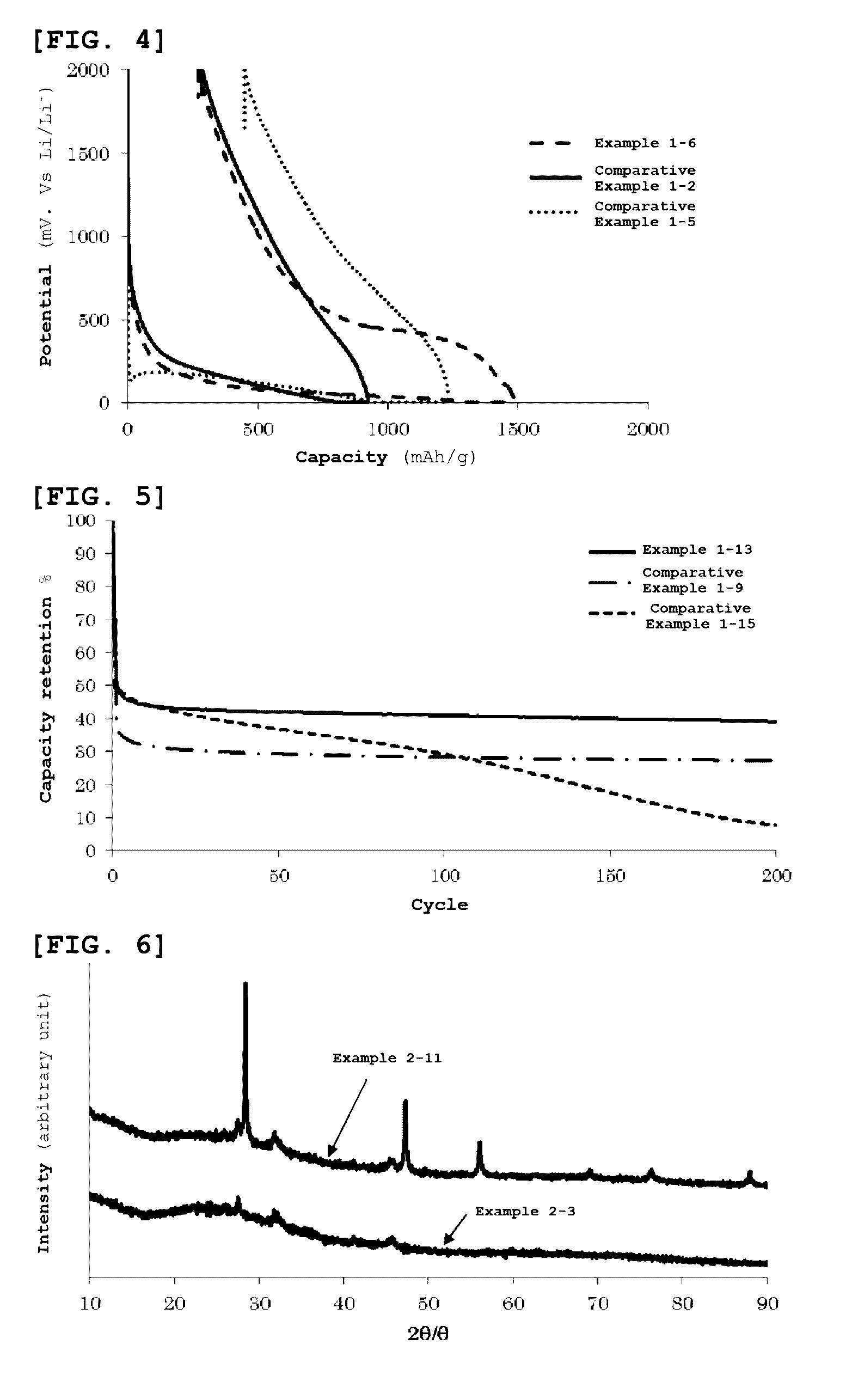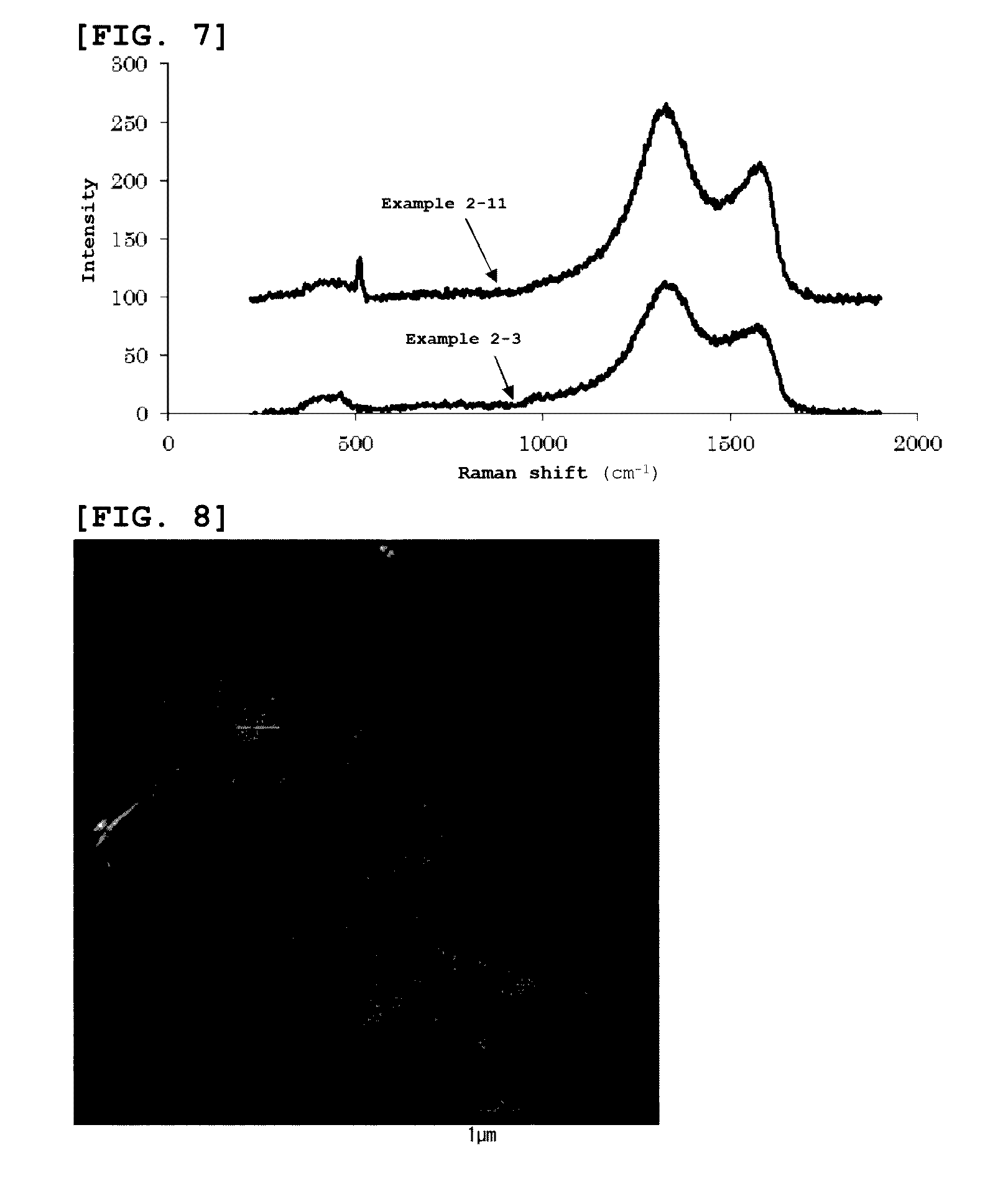Negative electrode active material for non-aqueous electrolyte secondary battery and method of producing the same
- Summary
- Abstract
- Description
- Claims
- Application Information
AI Technical Summary
Benefits of technology
Problems solved by technology
Method used
Image
Examples
first embodiment
[0055]The first embodiment of the present invention will be explained.
[0056]The inventive negative electrode active material for a non-aqueous electrolyte secondary battery of the first embodiment is represented by an elemental composition formula of Met1-Si—O—C—H. In the elemental composition formula, Met1 represents one alkali metal element or a mixture of alkali metal elements. This negative electrode active material contains a silicate salt made of a silicon-based inorganic compound and the alkali metal, and fine particles composed of silicon, silicon alloy, or silicon oxide (hereinafter also called generically as “silicon-based fine particles” simply) being dispersed in the silicate salt. The alkali metal element is preferably Li or Na. Preferably, the silicate salt further contains group 3 to group 13 metal. More preferably, this group 3 to group 13 metal is first row transition metal or second row transition metal. In the inventive negative electrode active material, carbon p...
second embodiment
[0083]Then, the second embodiment of the present invention will be explained. Regarding the same matters as in the first embodiment, the explanation will be omitted.
[0084]The inventive negative electrode active material for a non-aqueous electrolyte secondary battery of the second embodiment is represented by an elemental composition formula of Met2-Si—O—C—H. In the elemental composition formula, Met2 represents one alkaline earth metal element or a mixture of alkaline earth metal elements. This negative electrode active material contains a silicate salt made of a silicon-based inorganic compound and the alkaline earth metal. The alkaline earth metal element used herein is preferably Mg or Ca. In the negative electrode active material of the present invention, preferably the silicate salt further contains group 3 to group 13 metal. More preferably, this group 3 to group 13 metal is first row transition metal or second row transition metal. In the inventive negative electrode active ...
example 1-1
[0108]In a 1 L container of a two-axis planetary mixer, 10 g of polycrystalline metal silicon particle with average particle size of 0.2 μm, 150 g of methylvinylsiloxane with the viscosity of 60,000 cp represented by the chemical formula (1) described below, and 10 g of lithium carbonate were loaded, and kneaded at the rotating speed of 30 rpm for 1 hour. As a curing agent, 0.8 g of curing agent for silicone rubber compound manufactured by Shin-Etsu Chemical Co., Ltd. (brand name: C-8A) which contains 80% by mass of 2,5-dimethyl-2,5-bis(t-butylperoxy)-hexane was added, followed by curing reaction at 150° C. for 1 hour. The obtained cured material after cooling was greyish brown resin state, and the yield was 98.9%. Then, the obtained cured material was pulverized to diameters of approximately 1 mm, and 100 g of the same was loaded into an alumina crucible with the capacity of 280 mL. This was baked in a muffle furnace under an argon gas atmosphere in a condition of 1000° C. for 1 ho...
PUM
 Login to View More
Login to View More Abstract
Description
Claims
Application Information
 Login to View More
Login to View More - R&D
- Intellectual Property
- Life Sciences
- Materials
- Tech Scout
- Unparalleled Data Quality
- Higher Quality Content
- 60% Fewer Hallucinations
Browse by: Latest US Patents, China's latest patents, Technical Efficacy Thesaurus, Application Domain, Technology Topic, Popular Technical Reports.
© 2025 PatSnap. All rights reserved.Legal|Privacy policy|Modern Slavery Act Transparency Statement|Sitemap|About US| Contact US: help@patsnap.com



